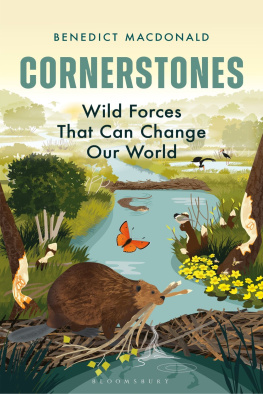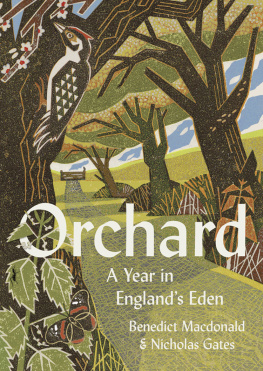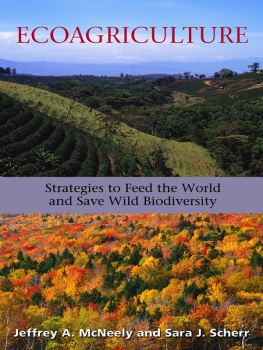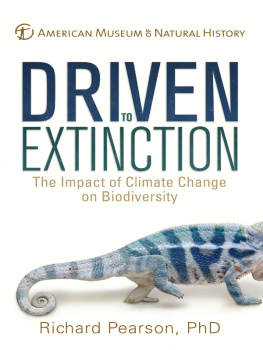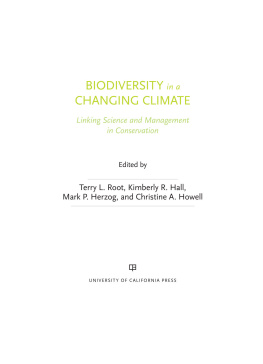

To my dear cousin Timothy Chiles, who taught me the value of all living things in nature, and what they do, from a very early age.

Contents
We stepped through the security fence, and the chilling sameness of our countryside gave way to sudden, riotous variety. The birch woodland was filled with grasses, sedges and bramble, but the bramble had been neatly clipped into thorny islands by some unseen gardener. The birdsong was turned up sudden and loud. A marsh tit buzzed in a stand of newly coppiced willows whilst blackcaps and garden warblers bubbled and fluted alongside. As we walked through the woodland, some fallen trees already had new saplings, and fungi, pushing up through their decaying forms. Water lay like a film across the forest floor. Soon, we reached the first of the ponds.

Just three years earlier, the landscape we were looking at now had been a straight river a tributary of the Tinney, near Ladock in Cornwall; an area of Britain prone to increased winter flooding in recent years. Now, in place of a straight torrent, a calmed wetland lay within the woodland. A kingfisher glowed on a young birch, watching the pond with intent, which, upon closer inspection, skipped with young brown trout that repeatedly broke the surface. The pig-like screech of a water rail carried from the sedges. All around the edges of the impounded river were bushlands of the kind rarely seen in our country; dense, billowing willow bushes, like perpetually frozen explosions, mingled with birches. A large oak had been felled close by and lay across the edge of the pond, creating a frenzy of microhabitats in its fallen wake; little wood-lined ponds, bramble tunnels and nettles. The water-loving alders, alone, grew straight; they had largely been left intact. With a sad little flute, a male bullfinch flew with his mate across the pond, their white rumps flashing as they vanished into another corner of their shade. The sunlit edges of the newly formed pond were silvered with a lithe new crop of common frogs. Each reed appeared to harbour a dragonfly: broad-bodied chasers and common hawkers cruised around.
There was a hushed silence amongst the group. One remarked that it felt as if we had stepped into a Canadian wilderness. The landowner, a respected local beef farmer, Chris Jones, appeared delighted. He led on, pushing ever deeper into this Cornish wild. Look, he observed, how fast the new willows have grown back.
We had stopped by a fallen branch, and yet it was not quite detached from the tree. Precise carpentry had chiselled away at the trunk to leave a triangular, spear-like point. Here, the rest of the willow had fallen into the water, but already new shoots were sprouting, like feathered tentacles, from the place where the cut had been made. All around the ponds edge, previously straight-growing trees had been reformed into bushes, with new branches bursting out of every hewn limb. Deadwood and live shoots now existed side by side. At one point, close to the bank, we heard a deep, low growl from within the earth, as if the soil itself was groaning. We hurriedly stepped back and left the unseen inhabitant in peace, below.
As we ventured on, I mentioned to Chris that this was surely the ideal habitat for the UKs most rapidly declining resident bird the willow tit. An inhabitant of dense, damp scrub-woodland, which excavates its nest hole in only the softest of standing timbers, the willow tit has vanished from many of its former haunts. Within my lifetime alone, I have watched entire populations disappear from areas close to home. But then, with a dramatic sense of timing, I heard an angry, nasal, tzchay, tzchay, tzchay, and there were a pair of willow tits, moving restlessly through the new willow scrub as if no one had told them they were rare. It would emerge later that a small population still survived nearby, and from here they had been able to colonise the newfound chaos. A little while later, we found an uneven, small hole like that of a tiny, untidy woodpecker dug into one of the decaying willow stumps by the waters edge: the willow tits distinctive nest hole. And their habitat, like that of the kingfisher and water rail, the brown trout and common frog, had been magicked into being in just three years.
Evening was drawing in, and the first noctule bats appeared to hawk low over the pond. The air above the ponds surface danced with small, airborne insects. As the colours deepened and the willows turned to shadows, we caught the distinctive paler form of a Daubentons bat as it whisked low over the water. Now, the scene was set. We had not come here for kingfishers or willow tits, bats, frogs, fish or fungi. We had come to see those who had created and reformed this landscape.
The water was a vivid deep orange, in the late evening night, when the first beaver appeared. A female, she moved with great grace, leaving the smoothest of wakes behind her. At one point, someone on the bank moved a little too suddenly for her liking; with a tail-slap she was gone, but soon resurfaced again. Settling into her routine, the female beaver proceeded to the felled oak, where, from the safety of the water, she began to beaver away; zealously hewing away at a large branch, snapping it off, then holding it deftly between her claws. At this point, three far-smaller wakes appeared from the opposite side of the pond, and her three kits came to join her. Hearts were collectively melted as it was realised that each kit was carrying a tiny beaver-twig of its own: beavers learn their craft from a very early age.
The three kits joined their mother in the water below the fallen oak. This sight would, prior to the 1300s, have been common across southern England. There was enormous poignance, therefore, in knowing that we were the first generation in almost 700 years to witness it again and to stand within a southern English landscape whose very character and wildlife had been shaped, above all, by the actions of one animal alone. More so that this mammal was not, for once, ourselves.
Over the course of the next hour, the female beaver and her kits, which had perhaps left the lodge just a week before, continued to hew and nibble away at the branches of the fallen oak, and eventually the male came to join them. For 15 minutes, the male and female groomed one another, delicately removing stubborn twigs from their lustrous, felted fur. The kits eventually became more adventurous, setting out across the pond in search of new, tiny twiglets of their own. The air was now thick with moths as bats sallied into their midst above the beaver-made pond. As the sun set, we left the beavers to do what they do best.
The following morning, it became clearer to what extent the entire landscape here enclosed for now, within a fence had been reformed by beavers. Not one, but a series of dams had transformed a narrow tributary of relatively limited use to many native species into a complex, tiered set of impounded ponds, loud with birds and rich in fish. The ponds, Chris explained, were acting as important crches for young trout, which, with surprising ease, then used fish passes around the dam; small areas where the river successfully breaks free of each beaver dam to continue its course, calmed and slowed, downstream. Over the past three years, the vast majority of willows and other trees gnawed by beavers up to 80 per cent had survived, evolving into ever denser coppiced forms. Now, these were home to a range of birds that cannot make use of live, straight trees from reed buntings to nesting garden warblers. The vegetation complexity of the forest floor was striking; whilst beavers are well known for felling branches, they also coppice bramble, creating nesting islands for birds, and refuges for nectaring insects, whilst not allowing this fast-spreading bush to rampage throughout the woodland. The dams themselves were like trellises: ox-eye daisies, meadowsweet, rosebay willowherb and purple loosestrife were bursting up through them. A jay had perhaps passed by and buried some acorns, as a few small oaks were also beginning their journey upwards from the fertile, silted base of the dam, into the light.
Next page
